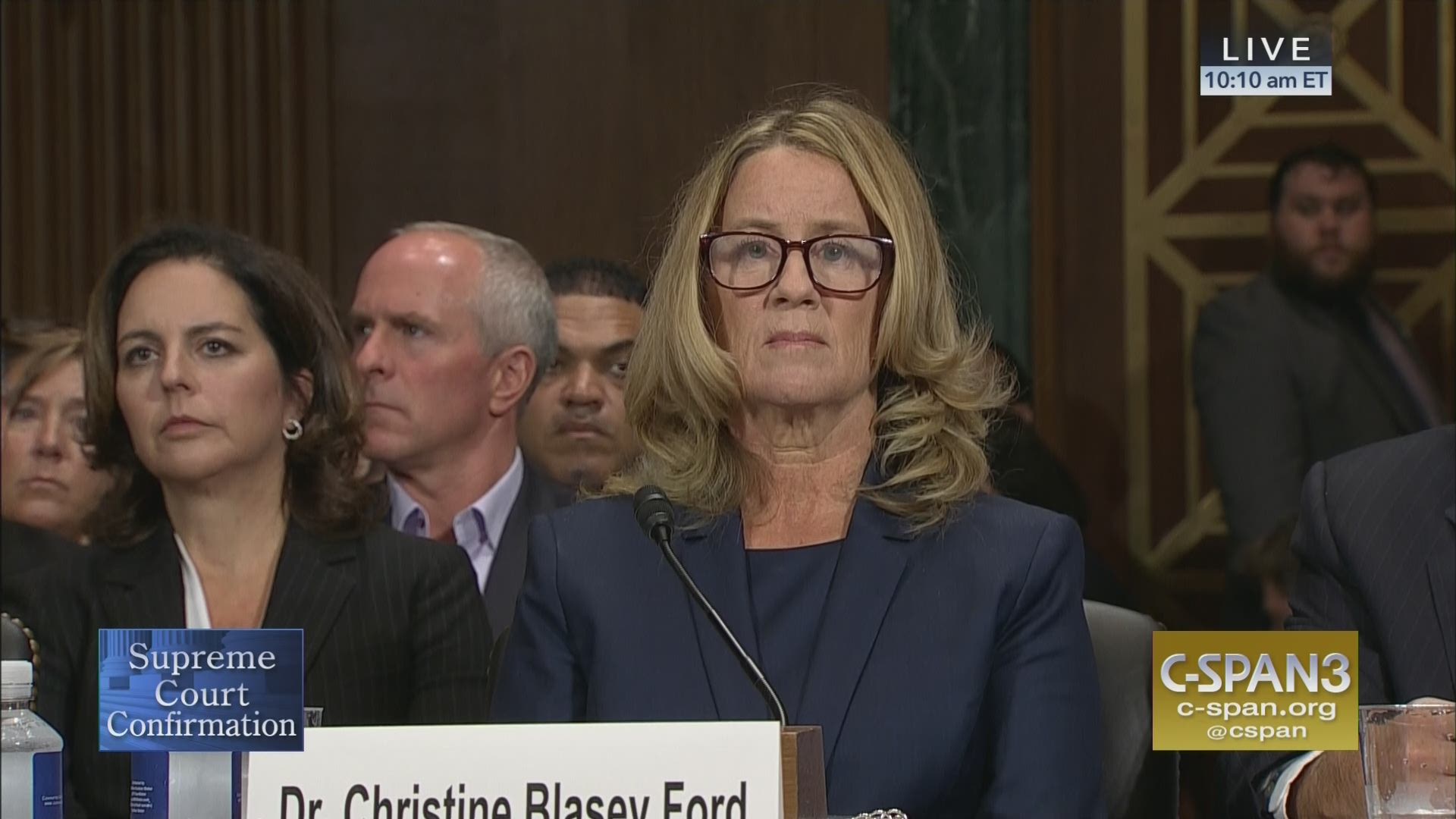Lights, One Less Camera, Action!
The Senate hearing with Supreme Court nominee Brett Kavanaugh and his accuser, Christine Blasey Ford, got plenty of TV coverage — it was roadblocked across most cable news and network-affiliated TV-station outlets — just not quite as much TV coverage as C-SPAN had wanted.

Viewers may have noticed that shots of Senate Judiciary Committee chairman Charles Grassley (R-Iowa) and ranking member Dianne Feinstein (D-Calif.) were always slightly side shots rather than full-on faces.
While the Senate Judiciary Committee suggested C-SPAN would have four cameras in the hearing room — the cable-backed public affairs net was providing the TV pool feed for the commercial broadcast and cable networks — that did not prove to be the case.
In providing TV coverage of Hill hearings, C-SPAN usually has three cameras, one on either side to get the Democrats and the Republicans, then one in the front to capture the witnesses. But it sometimes uses a fourth camera in the back of the room to get a wide shot and a straight-on view of the chairman and ranking members, who are in the center. A C-SPAN source said it has used that fourth camera many times.
In an email outlining the video coverage, the committee said:
“The room already has three robocameras built in for the purposes of streaming the hearing online. This feed cannot be used to pool for media outlets. Typically, C-SPAN sets up three cameras in the room to serve as the TV pool feed. … For this hearing, C-SPAN has asked for a fourth camera. That equals seven total video cameras. For context, during the first four days of Judge Kavanaugh’s hearing, the room had a minimum of 28 video cameras in it.”
That clearly sounds to The Wire like someone at the committee thought C-SPAN would be granted that camera, since it used the seven-camera figure for comparison purposes.
Multichannel Newsletter
The smarter way to stay on top of the multichannel video marketplace. Sign up below.
C-SPAN confirmed it asked for that fourth camera to get the straight-on wide shot, but said that request was denied, with no reason given. The C-SPAN source said it could have been space limitations.
A Senate Judiciary Committee spokesperson had not returned a request for comment at press time about the missing camera and the reason why it was denied.
Contributing editor John Eggerton has been an editor and/or writer on media regulation, legislation and policy for over four decades, including covering the FCC, FTC, Congress, the major media trade associations, and the federal courts. In addition to Multichannel News and Broadcasting + Cable, his work has appeared in Radio World, TV Technology, TV Fax, This Week in Consumer Electronics, Variety and the Encyclopedia Britannica.

